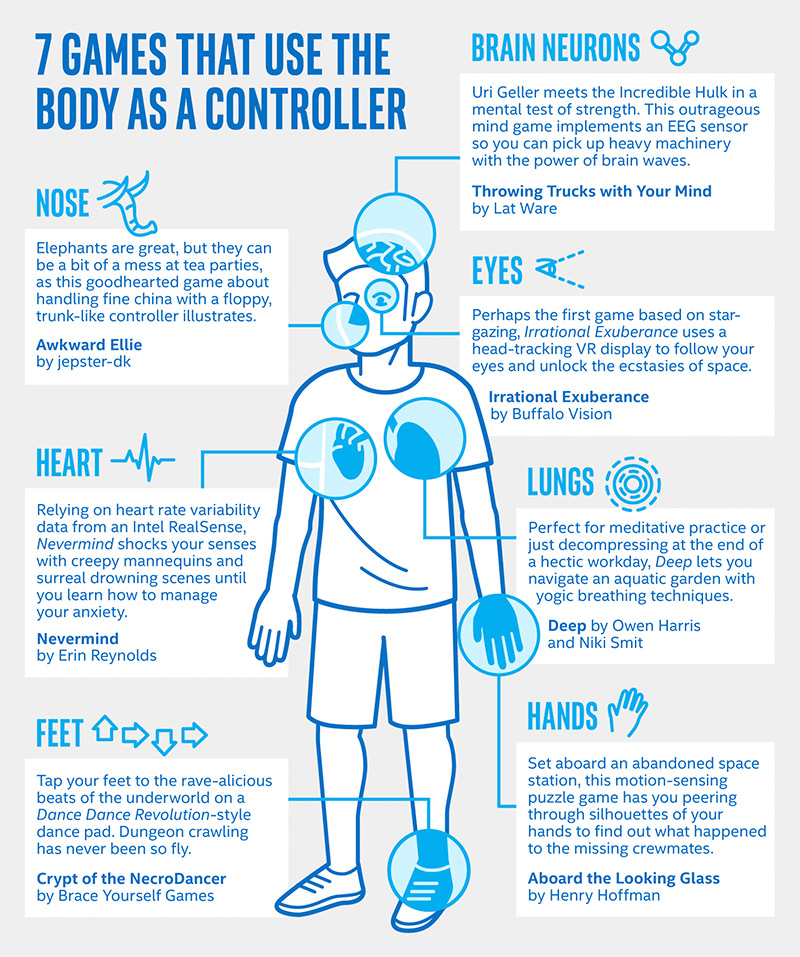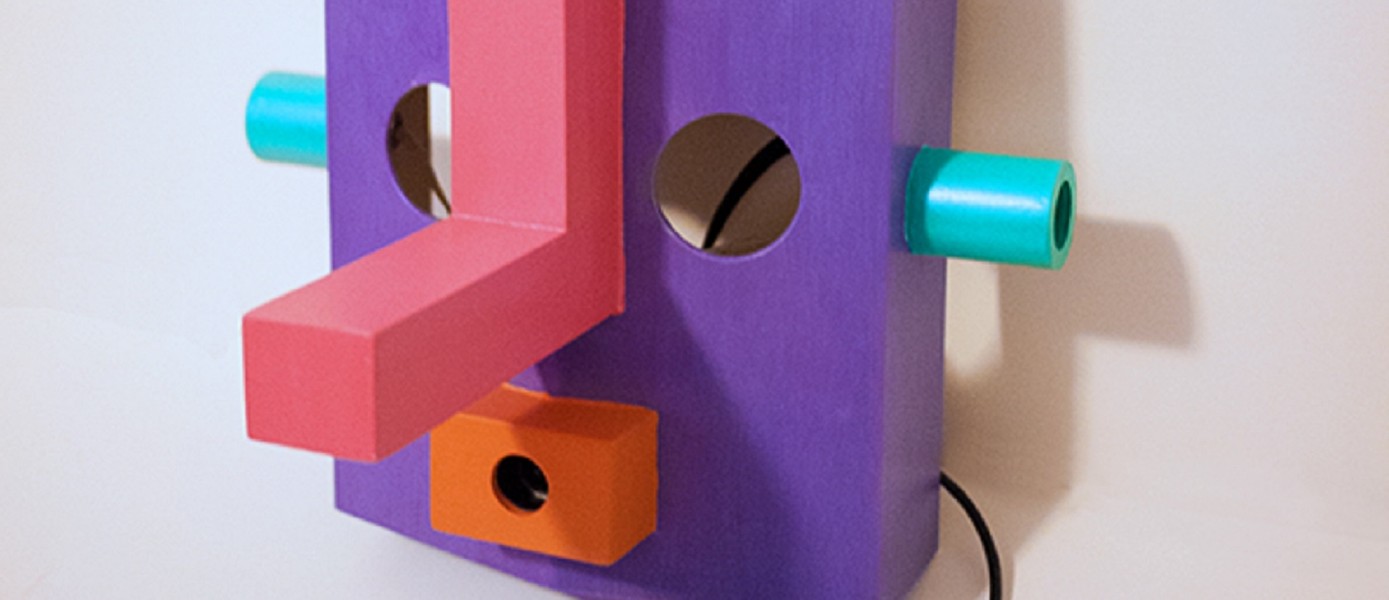This article is part of a collaboration with iQ by Intel.
While videogames have inspired a staccato of button-tapping throughout their brief but effusive history, the majority of games makes use of few motions other than a twitching of hands and fingers. There are notable exceptions, such as poking tennis balls with the Wii Remote or waving at the Xbox Kinect, but the 900 other ligaments of human physiology get markedly less play. With the new generation of alternative gaming controllers, however, the days of button-mashing may not be long for this world. These recent and fascinating alternatives give traditional controls a run for their money. Now more than ever, developers and designers are forging out funky, engaging and high-tech games that explore the entire body’s untapped potential for full-bodied fun.
In Homies (My Homunculi), a feral and funny game by the installation creator and interactive design instructor Sam Sheffield, the player straps into a pop-art inspired robot mask for a disorienting round of Simon Says. The voice of an imperious butler commands players to stick their fingers in places that they probably shouldn’t, like up the robot’s nose or in its ear holes. “The eyes are on springs so you have to chase them around,” Sheffield said, explaining that all this is simply more challenging than it sounds because you can’t see what you are doing with the mask on. “The idea is to give people permission to re-explore the geography of their faces,” he said.

Homies drew plenty of chortles and strange glances when it debuted alongside other experimental control interfaces during the ALT.CTRL.GDC exhibit at Game Developers Conference 2015, and for good reason. In the second level of the game, the player dons a wolf mask. Tilting her head in the direction of the (on-screen) moon, the player is instructed to let out a big howl. A third level would have naturally incorporated a “Creature from the Black Lagoon” style mask, but Sheffield scrapped the idea when he couldn’t come up with a gesture that felt right for the gilled monster.
Sheffield isn’t the only one experimenting with full-bodied gaming experiences. There’s a growing pool of game designers who are putting their heads together to think outside the gamepad’s hard plastic casing. Of course, they couldn’t do it if the technology wasn’t there. Egged on by the maturation of alternative inputs like Intel RealSense 3D camera technology, an increasing amount of tools exist to unleash their creativity. “If you ever played with the first incarnations of [motion control cameras], it was like playing stickman,” said Eric Mantion, Developer Evangelist at Intel. “What we’re accomplishing now with RealSense technology is a much finer granularity. It’s like giving a computer human depth perception so it can read face and hand gestures.”
This is exciting in and of itself. Rethinking something as basic and essential as controls often results in all kinds of new and innovating modes of play. This year’s ALT.CTRL.GDC exhibit, for instance, will include wondrous curiosities such as Palimpseste, an almost kaleidoscopic first-person exploration game that lets you use a pair of goggles to cycle through red, blue and green color filters and discover unseen secrets in the game-world. In Awkward Ellie, players don trunks to simulate a clumsy elephant who isn’t exactly making friends at the fine china store. Elsewhere, the IndieCade finalist Maze of Heart uses a next-gen motion-sensing camera to turn the user’s entire body into a kind of mechanical puzzle box. Players must reassemble pieces of their broken hearts, shaking them free from their upper and lower extremities so that the pieces combine in their chest area.
The game design technology is decidedly futuristic, but there’s a getting-back-to-nature element to these advancements. “What’s interesting about a lot of the newer immersive 3D technologies is how they allow us to reconnect with the kind of gestures that games have let go to the wayside,” Sheffield said. “There is an incredible vocabulary of gestures that are practical and expressive, but we use almost none of them while playing digital games. These kind of technologies are opening it up.”
In addition to creating fertile grounds for the ideation of fun, intuitive technologies are opening their arms to people who might otherwise be turned off by the complexity of the traditional gamepad and the two-fisted, claw-like grip necessary to use it. The new wave of full-body games “are about doing micro-gestures — things that your hands and fingers are designed to do,” said Sheffield. By stepping away from standard controls and button-mashing to design games for the body, the medium will be all the more approachable and human-centric.
